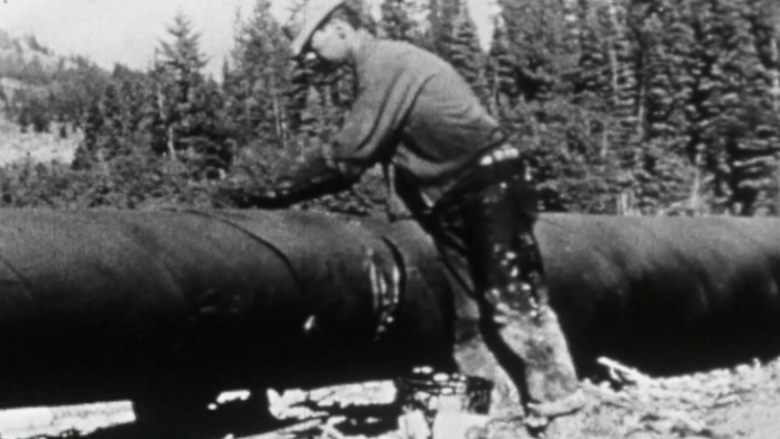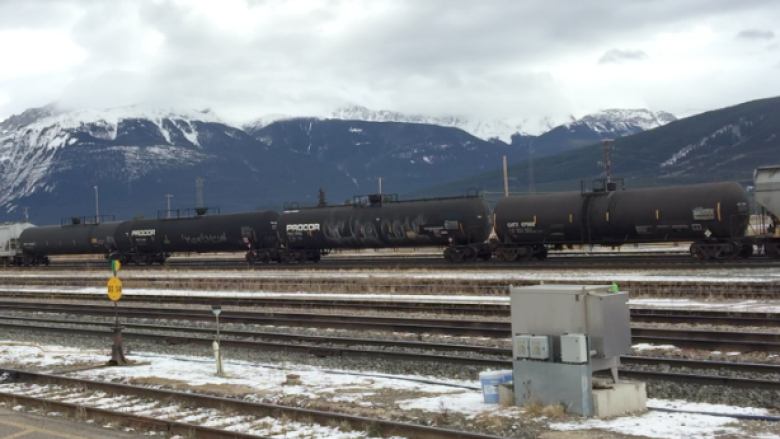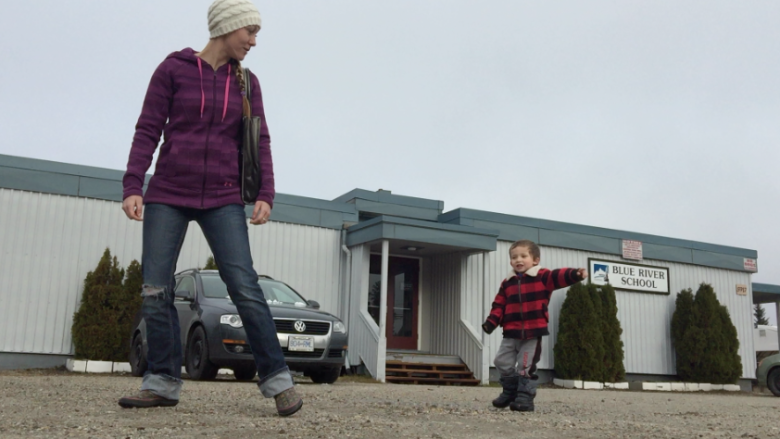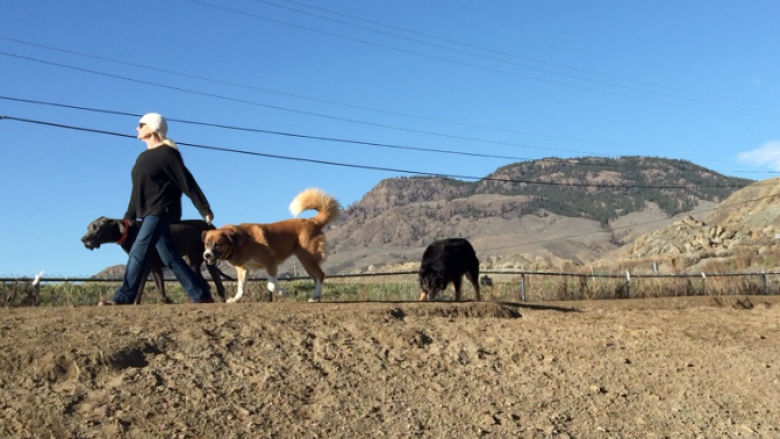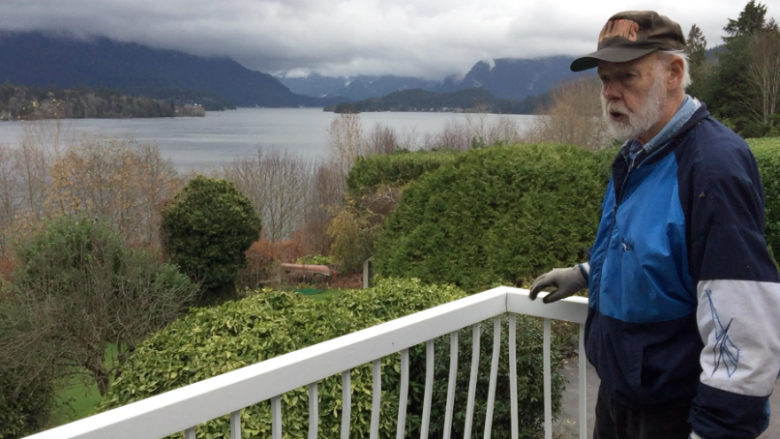Along Trans Mountain pipeline, opinions range from pro to protest
This story was originally published Dec. 6.
The Trans Mountain pipeline hasn't changed much since it was built in 1952.
Carved out of the land between Alberta's oil country and the B.C. coast, it began moving about 300,000 barrels of crude a day across the Rockies the following year.
The route is no secret, clearly marked along the way by bright yellow signs bearing the Kinder Morgan and Trans Mountain names and the warning that a high pressure pipeline lies just below the surface.
But the static nature of the decades-old piece of energy infrastructure could be about to change after the federal government approved the twinning of the line last week.
The green light came from the top, delivered in a measured tone by Prime Minister Justin Trudeau along with the approval of Enbridge's Line 3 upgrade and the rejection of the company's Northern Gateway project.
It was news that many Canadians, especially in Alberta's oil patch, had been hoping for — and that a nearly equal number had been dreading.
If the line is expanded, it will carry about three times as much crude to tidewater and dramatically increase the amount of tanker traffic in Burrard Inlet off the coast of Burnaby, B.C.
- ANALYSIS | Beyond the hippie stereotype: A closer look at the opposition to Trans Mountain
It is a big "if," because in order to break ground, Kinder Morgan must first meet 157 conditions laid out by the National Energy Board and convince 120 First Nations to allow the line to cross their land. No easy task.
Depending on who you ask across Canada, the line is either a sensible and needed piece of infrastructure or a project that will undermine the country's efforts to cut carbon and green the economy.
It is a range of views that is on full display along the route of the original Trans Mountain line.
About 300 kilometres west of Edmonton, the pipeline passes through Hinton, Alta. The town of around 9,000 people relies on natural resources — not just oil and gas, but coal and timber, too.
Inside the local curling rink, signs of the importance of the energy industry are everywhere: sponsorship banners hang from the walls, energy company logos are emblazoned on the ice.
Around here, pretty much everyone relies on oil and gas money in one way or another, including this curling club. The rink's manager, Brett Cieslikowski, says almost half of the club's men's league works in the energy industry.
"They are huge sponsors of our club," he said. "We may not be able to survive without their sponsorships. They are very important to our community and to this club specifically."
Cieslikowski said that like the vast majority of people in Hinton, he supports the expansion of the Trans Mountain line. The hope here is that an expanded line could provide much-needed jobs and a boost to the local economy that will trickle right down to the ice at this rink.
"I think we should be all for it." Cieslikowski says. "It supports a lot of people's lives. That is how a lot of people in these rural communities make a living."
An hour away in Jasper, many people in the scenic mountain town support the project, but safety, not the local economy, are top of mind for most.
A busy rail line runs right through the centre of Jasper, and what it carries worries Jenny Hatto. "I personally would rather see the oil on a pipeline than on the train out here," she said.
Hatto also thinks expanding the line that runs through her community makes more sense than the Northern Gateway proposal, which would have run a new pipe through the Great Bear Rainforest to the northern British Columbia coast.
"Kitimat is a really dangerous thing, because the waters there, the Hecate Strait, are more likely to cause problems," she said.
The federal government agreed, saying the Northern Gateway project was not in the interest of Canadians
Trudeau argued that "the Great Bear Rainforest is no place for a pipeline, and the Douglas Channel is no place for oil tanker traffic."
About three hours south of Jasper, you reach the tiny community of Blue River, B.C. Kinder Morgan runs a pump station there, one of the few employers in a town that has shrunk from around 800 to just 250 in recent years.
"For sale" signs hang in the windows of every other home here, and the hope is that if the Trans Mountain expansion goes ahead, it could mean good construction jobs in the area and more work at Kinder Morgan's facility.
At the only store in town, customers are few and far between.
Robert Oakman's family has been running the Blue River Market for more than 40 years, and he hopes that it won't just be jobs that return to Blue River if the Trans Mountain pipeline is expanded.
"Might bring more people into town to live in Blue River, and at the same time, maybe more homes will be built in Blue River," he said.
Around the corner from Oakman's shop and the Kinder Morgan facility is the local school. There are just eight students enrolled there these days, including Kasey Quinn's son. Enrolment is down from nearly 80 when she went here.
As her son splashes in a nearby puddle, Quinn says she has no worries about the safety of the pipeline that runs through her back yard and behind her son's school.
"It's been here my whole entire life," she said. "I have never had to worry or wonder if something is going to happen because I feel safe. I know that the men here do their jobs to ensure that things are not going to happen."
From Blue River, the Trans Mountain line winds south through the mountains, eventually making its way to the city of Kamloops, where the yellow signs that mark the path of the line run through an arid gorge and past one of the city's off-leash dog parks.
Like the variety of dogs that frequent this park, opinions about the Trans Mountain expansion are diverse here. There is support but also some lingering concerns about pipeline safety.
Robin Dykes walks her dogs here nearly every day. "I am not against pipelines," she said. "I just want them to assure and somehow give us a safety net so that we can have more faith in them."
Dykes would like to see a fund set up by Kinder Morgan that would pay for any cleanups that need to happen along the line in the future.
Kinder Morgan has pledged to establish just such a fund to improve its ability to respond to spills along the B.C. coast. But the worry among many residents in Burnaby where the Trans Mountan line ends is that no matter how big that fund is, it won't be big enough.
If the line is expanded, tanker traffic in Burrard Inlet will jump from about five per month to more than 30, a big worry for people like Art Hilstad and his neighbours.
Hilstad has lived on a quiet suburban street in Burnaby for more than 50 years. From his back deck, the 86-year old can see right into the inlet, and he worries about all those tankers moving past his backyard,
"They said, 'Oh no, nothing to worry about.' The spills, well, the spills happen on a pretty regular basis. Even the last one, which was a tug, how many thousands of litres was that spill?"
Of course, getting permission to build a pipeline and actually doing it are very different things. Now that Kinder Morgan has the green light to twin the Trans Mountain line, those who live next to it will just have to wait and see if they actually do.

